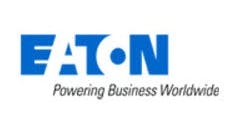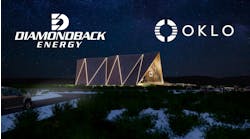Harold Ruckpaul, director of strategic alliances at Eaton, explores the energy transition, the changing flow of power and growing microgrid adoption in an interview with Kevin Normandeau, publisher at Microgrid Knowledge, at Microgrid 2020 Global event.
Eaton is well-known as a leading power management company, but Normandeau and Ruckpaul began the interview by highlighting the company’s microgrid solutions.
“So, this is all part of an energy transition, and, basically, from our viewpoint, power systems are becoming more and more interconnected, and they’re requiring evermore dynamic controls to ensure safety, reliability, cybersecurity considerations and various performance considerations,” said Ruckpaul.
Check back for more Executive Interviews from Microgrid 2020 Global, published regularly on Microgrid Knowledge.
He explained that Eaton’s focus is on building and then deploying its controls into a variety of power systems to more effectively manage renewables, provide increased system resiliency — and reduce carbon footprint.
As for the organizations that would most benefit from Eaton’s energy transition services and why, Ruckpaul said, “We service all of the primary market verticals…everything from residential to government and DoD [Department of Defense] contracts for microgrids that we’ve executed.”
The company also supports the commercial and industrial space with solutions for hospitals, manufacturing and even heavy industry and mining.
There are, of course, a variety of use-case scenarios that could be shared for the verticals. Ruckpaul chose to touch on these:
- Building off-grid microgrids in support of communities that have no access to the grid
- In the oil and gas space, solutions to support extraction operations that may have a finite lifetime, making it cost prohibitive to bring utility energy into the facility
“In other cases, it’s purely about the resiliency aspect,” Ruckpaul said, citing the wildfire-related power shutoffs in California. “Customers are really needing increased reliability and the absolute knowledge that the power is going to stay on.”
It’s clear that resiliency is top of mind for many industries, but as for the top trends driving microgrid adoption, Ruckpaul pointed to the wholesale adoption of renewables and the “change in the flow of power.”
“We have the concept of ‘everything as a grid’ now at Eaton. If you think of the traditional flow of utility power, it was one-way,” said Ruckpaul. “Now, it’s generally represented as two-way, but it could be more than two-way in that a facility could be buying power from the utility, they could be generating their own power through renewables, and they could be selling that power back to the utility or even back to a neighboring facility to support their energy needs.”
Join us for the next Microgrid Knowledge conference: Microgrid 2021: The World Awakens to Microgrids, May 11-June 3. Speaker applications are being accepted through Feb. 15, 2021.







